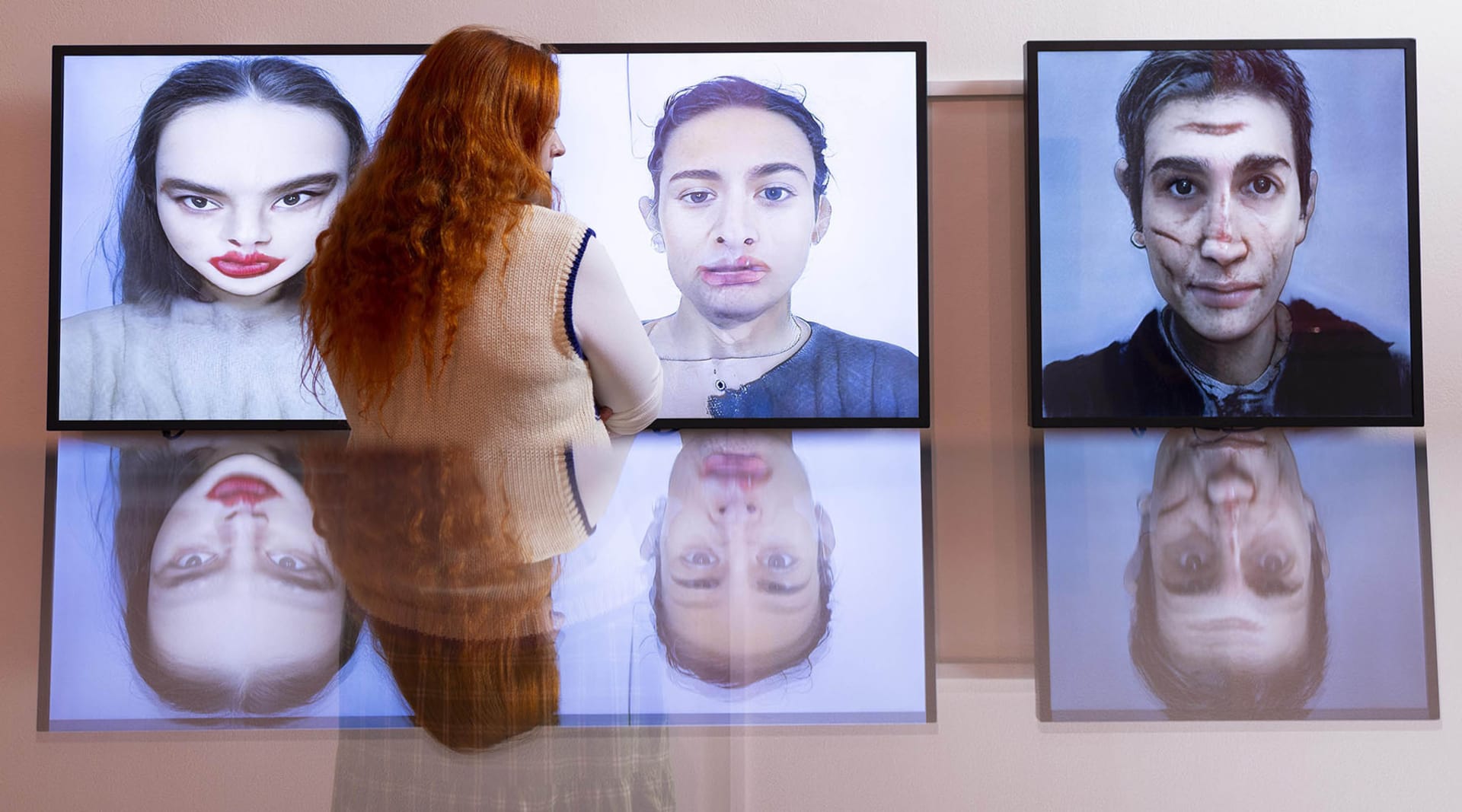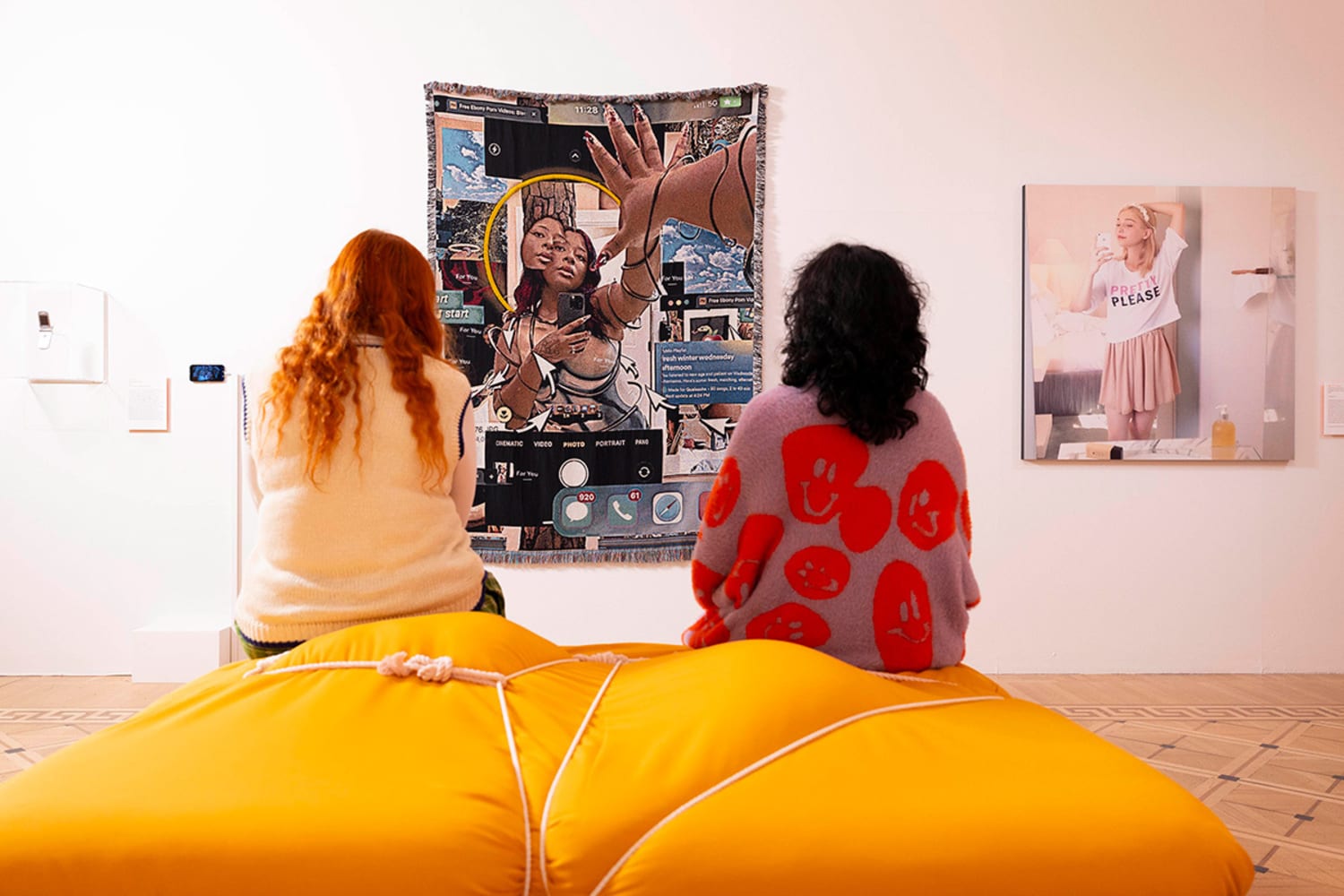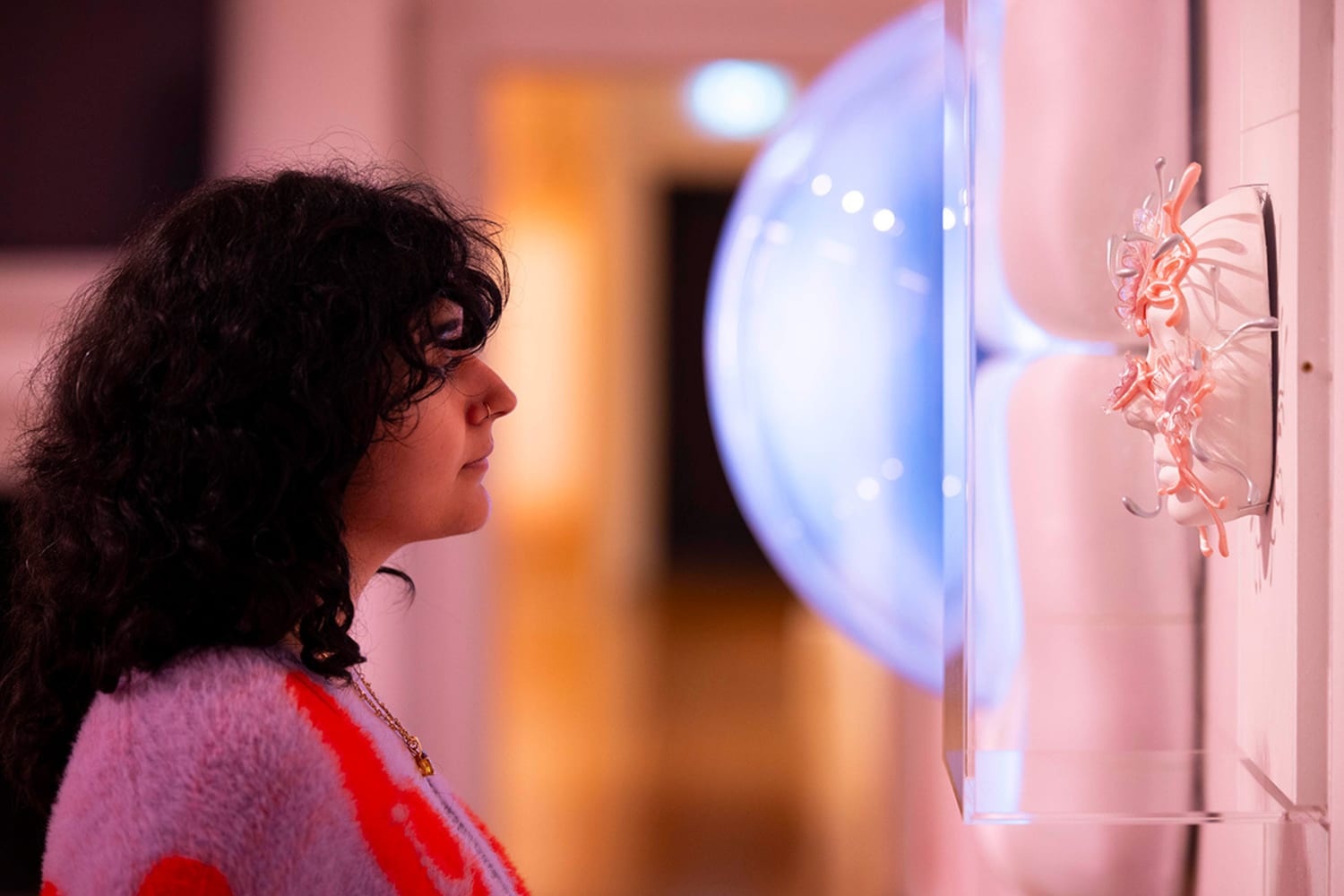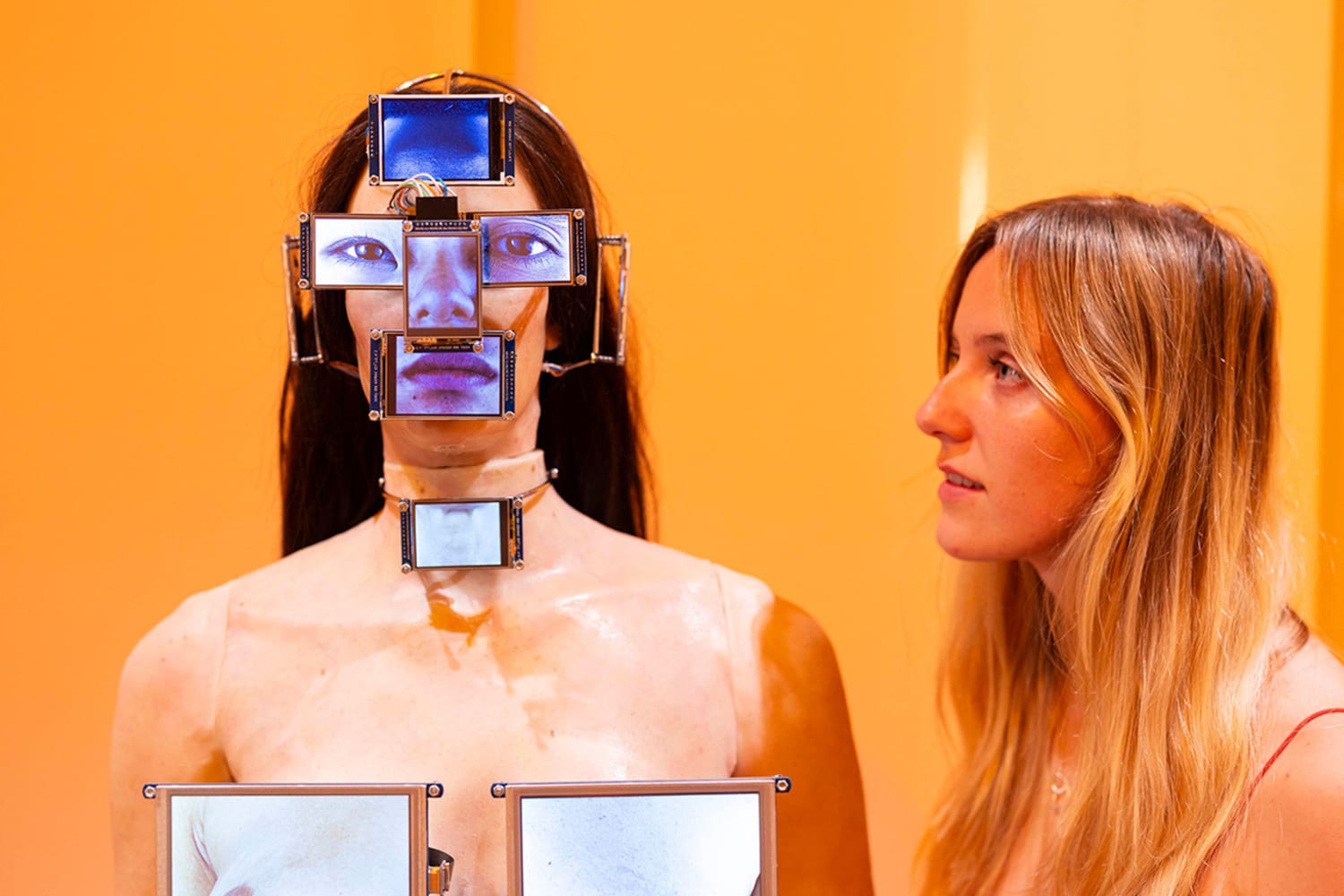Is today’s digitally advanced world propelling beauty into an abundantly beautiful or a dystopian future? The changing face of beauty and human identity is explored at London’s Somerset House’s latest exhibition, “Virtual Beauty.” Featuring more than 20 international artists, the show examines technology’s contribution to the evolving beauty landscape—from an early model of a camera phone to generative AI’s creative influence. The exhibition, which runs from July 23 to September 28, reveals that beauty is more than skin deep.
From AI-generated humans to virtual embalming—technology paves the way for infinite self-expression.
Image 1: Qualeasha Wood, It’s All For U (If U Rlly Want It), 2024 and Amalia Ulman, Excellences & Perfections (Instagram Update, 1 June 2014), 2014, ©David Parry, PA Media Assignments
Image 2: Virtual Beauty exhibition ©David Parry, PA Media Assignments
Image 3: Filip Ćustić, pi(x)el, 2022 ©David Parry, PA Media Assignments
“When we talk about ‘beauty’ we’re really talking about identity, and when we talk about identity it’s a spectrum - it can look any which way,” explains Bunny Kinney, co-curator of the Virtual Beauty exhibition. Noting the continuum of human identity is what the exhibition aims to explore in the digital age. Kinney adds that while beauty is “very personal and anthropological,” it is equally “imaginative and speculative.” Technology allows people to further extend the ways they can express themselves and share those expressions.

Virtual Beauty begins by exploring the modern obsession with self-image, driven by digital innovations including social media and the now ubiquitous selfie culture. The first of three rooms maps out digital self-representation across the past decades. Exhibits include French performance artist Orlan’s 1993 pre-social media performance Omniprésence, which captured her facial aesthetic surgery via live stream as a challenge to beauty ideals; Samsung’s 2003 mobile phone featuring a front-facing camera— which paved the way to selfie culture; Filip Custic’s 2022 work Pi(x)el, a hyperrealist sculpture featuring 25 digital touchscreen panels displaying a rotating series of different body parts.

The second room sees artists pushing the boundaries of beauty using digital filters, AI, biometrics and more to broaden the possibilities of what identity, gender, race and the human form looks like in the digital era. Works include artist Hyungkoo Lee’s 2010 artwork Altering Facial Features with WH5 and Ben Cullen Williams three-channel film called Past Lives. The latter, created in collaboration with Isamaya Ffrench, displays portraits of people who have undergone a digital beauty makeover with generative adversarial networks (GANs) resulting in distorted and warped faces.

The third room provides a futuristic outlook, with artists creating digital avatars, 3D scanned bodies and the prospect of what our bodies could look like after death. Frederik Heyman’s Virtual Embalming film made in 2018 was inspired by funeral embalming rituals from Puerto Rico. Heyman worked with digital artists to create virtual wakes, digitally preserving the body in the afterlife.
Bunny Kinney
Co-curator, Virtual Beauty at Somerset House
Challenging, inspirational and thought-provoking, Virtual Beauty shows the possibilities of identity enhanced by the digital touch. Bunny Kinney tells VML Intelligence, “We are headed towards a singularity in which whoever we are and however we express ourselves—online or in a virtual realm—is just as authentic, or, in fact, one and the same as who we are offline.” Kinney believes through technology “we can create a legacy and make it live on beyond our mortal bodies.”
The Intelligence take:
Technology has radically transformed our relationship with ourselves and each other, offering new tools to explore an extended sense of self. Perhaps in the future, there will be a market that allows people to digitally capture their immortal selves. Kinney ponders whether people can “start having more agency and pre-plan a legacy that lives on and can be more creative and more meaningful than what we leave on social media today.”
Please provide your contact information to continue.
Related Content





